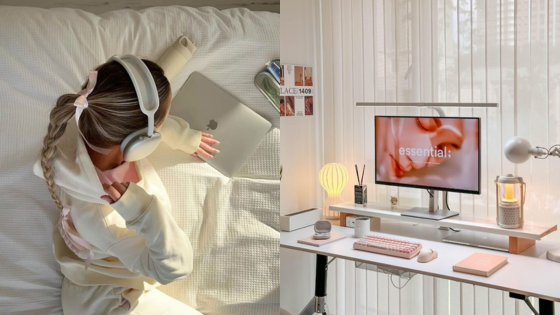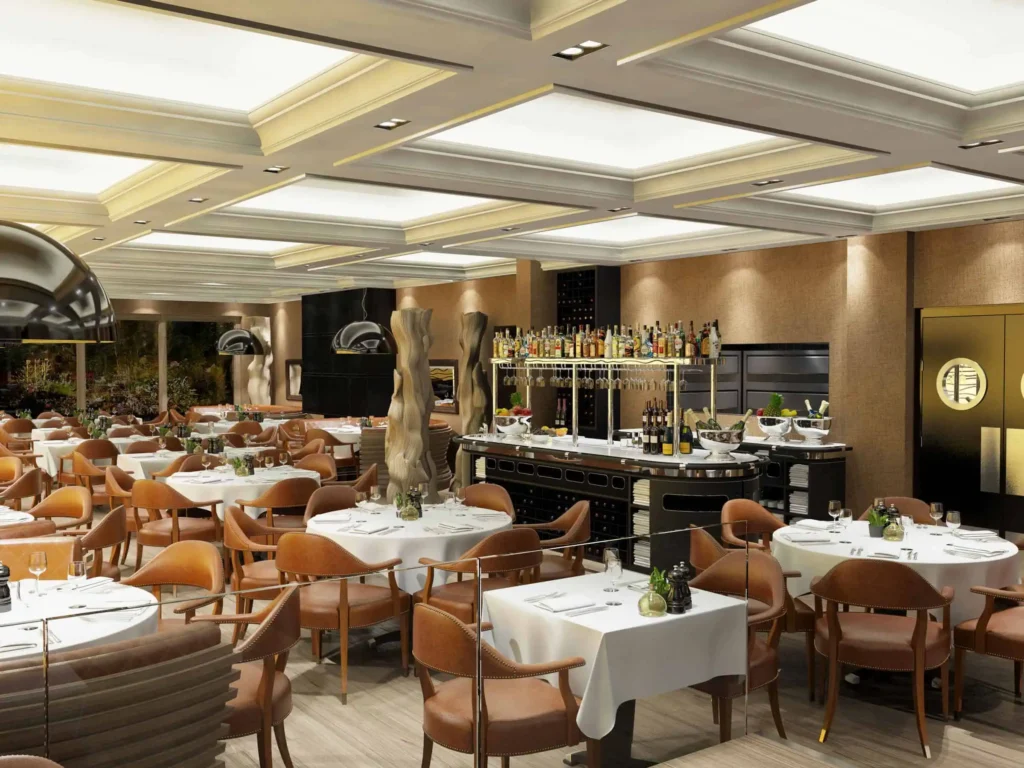
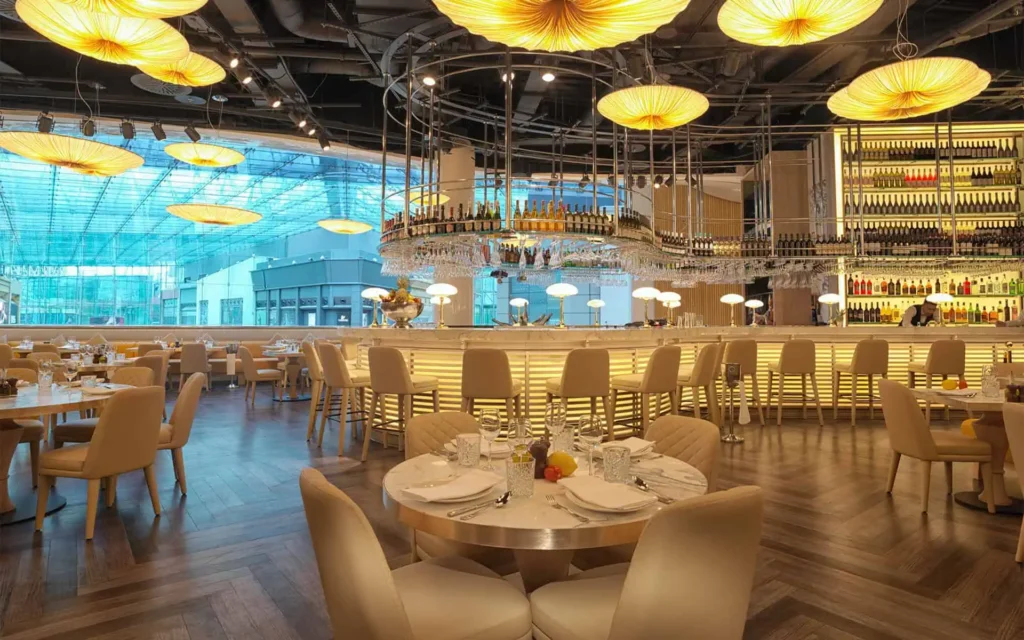
There’s an undeniable charm to dining in a beautifully designed restaurant—the ambience, the flow, the subtle interplay of light and shadow. It’s an experience crafted with meticulous attention to detail, where functionality meets aesthetics in perfect harmony.
But who says this level of design sophistication should be confined to commercial spaces? More homeowners are drawing inspiration from the world of restaurant design to elevate their own living environments. By borrowing principles from these expertly curated spaces, we can enhance both the functionality and beauty of our homes.
Optimising Layout and Flow
Restaurants are masters of space utilisation, seamlessly accommodating guests and staff within often limited confines. They create zones for dining, socialising, and movement, ensuring each area functions harmoniously with the others.
At home, we can adopt similar strategies. Consider defining spaces within open-plan areas—perhaps a cosy reading nook adjacent to the living room or a dedicated dining area that encourages family gatherings. It’s all about creating a natural flow that suits your lifestyle, making the most of every square metre without feeling cluttered or cramped.
Strategic Lighting Design
Lighting in restaurants is both an art and a science. It’s used not just to illuminate, but to create mood, highlight features, and guide the eye. Layered lighting—combining ambient, task, and accent lights—adds depth and versatility to a space.
At home, think beyond the standard overhead fixtures. Introduce floor lamps for ambience, under-cabinet lights for tasks, and perhaps a statement pendant over the dining table to draw focus. The right lighting can transform a room, shifting from bright and invigorating in the morning to warm and intimate in the evening.
Furniture Selection and Arrangement
In the hustle and bustle of a restaurant, furniture must be both stylish and functional, standing up to heavy use while maintaining comfort and appeal. When selecting furniture for your home, consider pieces that balance these qualities. Opt for durable fabrics and materials that can withstand daily life, especially in high-traffic areas like the kitchen and living room.
Arrangement matters too. Furniture should facilitate conversation and movement—so think about how sofas, chairs, and tables relate to each other within the space. Sometimes, less is more; a few well-chosen pieces can make a stronger statement than an array of cluttered furnishings.
Enhancing Acoustics
Sound is an often-overlooked element of interior design, yet it profoundly affects how we experience a space. Restaurants invest in acoustic treatments to manage noise levels, ensuring conversations remain private and the atmosphere stays pleasant. At home, hard surfaces like wooden floors and large windows can create echoes and amplify noise. Soft furnishings, rugs, and curtains not only add aesthetic warmth but also absorb sound, making your home feel more tranquil.
For those keen on a quieter environment, consider acoustic panels or even strategically placed bookshelves filled with your favourite reads.
Material and Finish Choices
Restaurants frequently use materials that are both durable and visually appealing—think polished concrete floors, textured wood panels, and sumptuous upholstery. These choices aren’t just about longevity; they contribute to the overall sensory experience. In your home, selecting materials that marry form and function can elevate everyday living. Perhaps a stone worktop that’s both robust and elegant, or tiles with a tactile finish that catch the light just so. Sustainable materials are also becoming increasingly popular, offering eco-friendly options that don’t compromise on style.
Incorporating Branding and Personalisation
Branding in restaurants creates a cohesive narrative, tying together décor, menu, and ambience into a unified identity. While we might not think of ‘branding’ our homes, personalisation is the residential equivalent. It’s about infusing your space with elements that reflect who you are—your tastes, your experiences, your story. This could be through a signature colour palette, cherished artworks, or bespoke furniture pieces. These personal touches transform a house into a home, making it uniquely yours.
Connecting Concepts
Ultimately, both restaurant and home designs strive for a harmonious balance of function and beauty. The goal is to create spaces that not only look good but also feel good to live in. For more insights on achieving this delicate balance, this blog post by Carroll Design offers a wealth of knowledge on combining functionality with aesthetics.
Practical Tips for Implementation
Embarking on a design overhaul can seem daunting, but starting small makes the process manageable and enjoyable. Focus on one area at a time—perhaps the dining room, where the influence of restaurant design can be most directly applied. Swap out harsh lighting for dimmable fixtures, rearrange furniture to improve flow, or introduce textiles that soften acoustics.
Budget-friendly changes like updating handles and fittings or adding a fresh coat of paint can also have a significant impact. And while DIY is rewarding, don’t hesitate to consult professionals when tackling larger projects; their expertise can save time and help avoid costly mistakes.
Final Thoughts
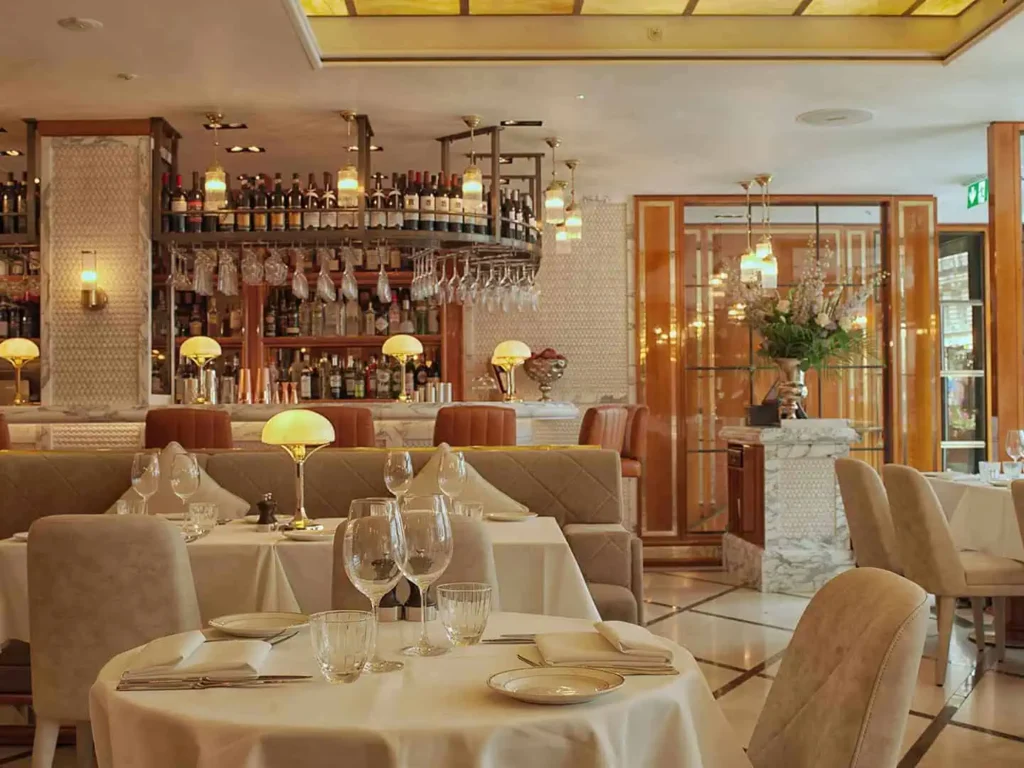
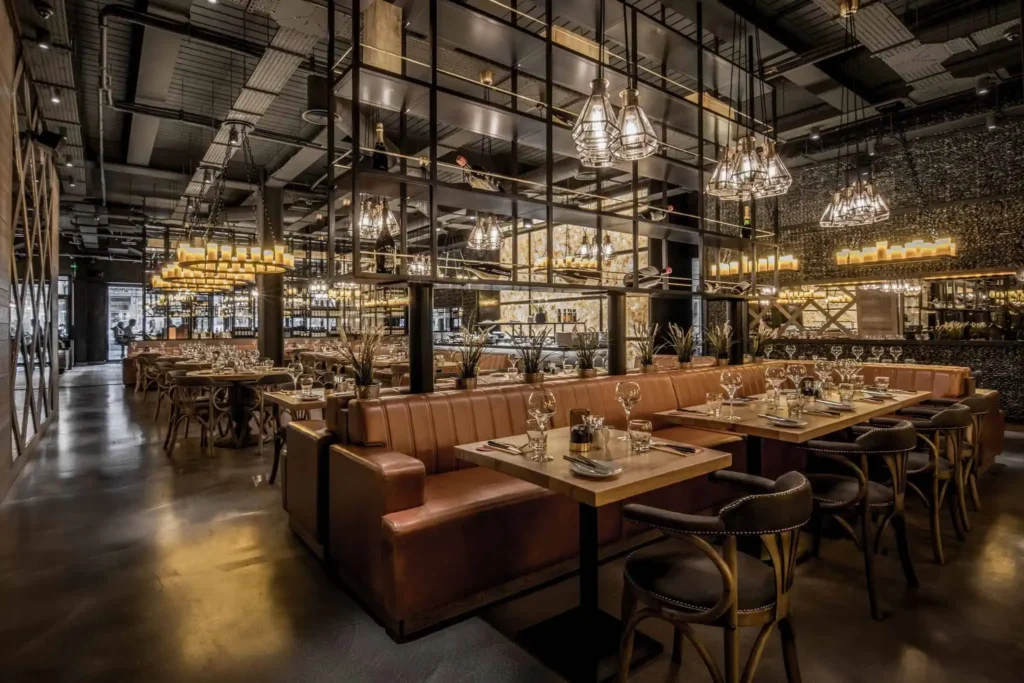
By embracing design principles from the restaurant industry, we can transform our homes into spaces that are not only aesthetically pleasing but also supremely functional. It’s about creating environments that cater to our needs while delighting our senses—a fusion of practicality and artistry.
So next time you find yourself admiring the ambience of your favourite eatery, consider how those elements might find a place in your own abode.
- 0shares
- Facebook0
- Pinterest0
- Twitter0



